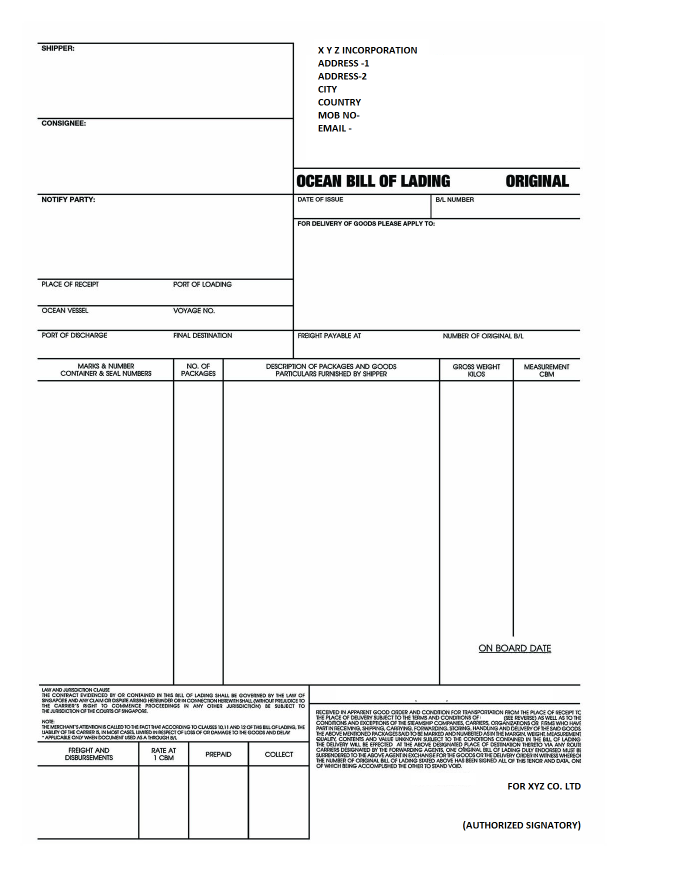- Bill of Lading is a legal document between the shipper of a particular good and the carrier detailing the type, quantity and destination of the good being carried.
- The bill of lading also serves as a receipt of shipment when the good is delivered to the predetermined destination.
- This document must accompany the shipped goods, no matter the form of transportation, and must be signed by an authorized representative from the carrier, shipper and receiver.
- A completed BOL legally shows that the carrier has received the freight as described and is obligated to deliver that freight in good condition to the consignee.
Bill of Lading in general includes the following
- Consignor’s and Consignee’s names and complete addresses.
- Purchase order no. and special codes used between businesses for order tracking.
- The date of the shipment.
- The number of units to be shipped. (With separate classification of different commodities)
- Type of packaging(Cartons, pallets, skids and drums)
- Special rules and requirements apply when you are shipping hazardous materials.
- A description of the items being shipped, include the material of manufacture and brand name.
- The NMFC freight classification for the items being shipped.
- The exact weight of the shipment. If multiple commodities are being shipped, then the weight of each commodity is listed separately.
- The declared value of the goods being shipped.





